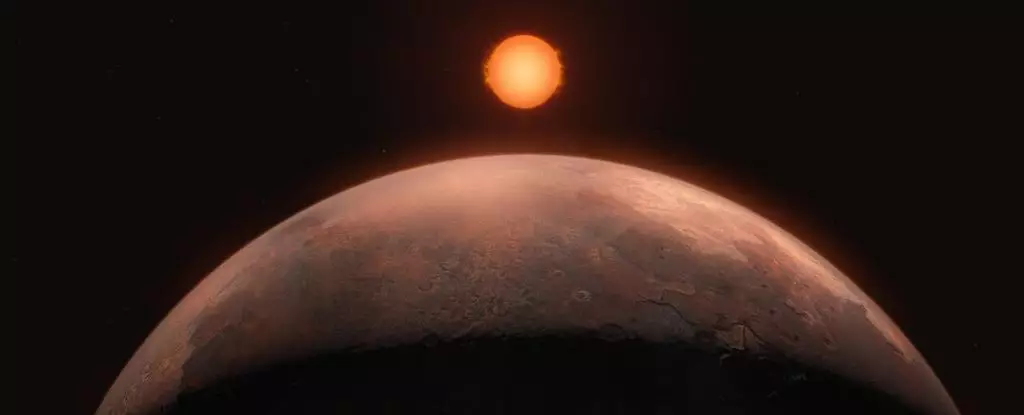The cosmos continues to surprise us, revealing secrets hidden in the depths of space. Recently, astronomers announced a significant find: an exoplanet orbiting our nearest single star, Barnard’s Star. This finding not only helps further our understanding of planetary science but also raises intriguing questions about the existence of other worlds in our galactic neighborhood.
Barnard’s Star, situated just 5.96 light-years from Earth, is distinguished from the sun by being a red dwarf—a type of star far more common in the universe than our own solar host. Red dwarfs like Barnard’s Star make up about three-quarters of the stars found in our galaxy. Studying such stars can yield fresh insights into planetary formation and the dynamics of potential life-supporting environments surrounding these celestial bodies. Unlike our sun, which is a larger, hotter yellow dwarf, Barnard’s Star provides a unique opportunity to examine a different type of stellar system and its corresponding planetary formations.
The exoplanet identified around this distant star has been designated Barnard b. With a minimum mass equivalent to approximately 37 percent of Earth, Barnard b is among the smallest exoplanets discovered to date. Although it offers exciting insights into the diversity of planetary systems, this world is not hospitable for life as we know it. Its proximity to the star places it far from the habitable zone, where conditions might allow for liquid water—a critical ingredient for life. Instead, the surface temperature would likely be hostile, rendering Barnard b inhospitable.
Barnard b’s validation follows a series of investigations after earlier indications suggested the presence of a different exoplanet around the same star, postulated in 2018. Although that earlier claim has not been corroborated, the confirmation of Barnard b has opened up new avenues of exploration. It’s worth noting that the quest for exoplanets is fraught with challenges; smaller planets exert a less detectable influence on their stars compared to their larger counterparts, making their discovery a task that requires precise and sustained observation.
The European Southern Observatory’s Very Large Telescope played a crucial role in the detection of Barnard b. Researchers focused on radial velocity—an observational method that captures the subtle movements of a star caused by the gravitational pull of an orbiting planet. When a planet orbits, it causes its star to move slightly as well, leading to periodic shifts in the star’s light spectrum. The data collected indicated a periodic movement corresponding to an orbital period of 3.15 days, firmly establishing the existence of Barnard b.
This methodical investigation not only confirmed Barnard b but also hints at the possibility of three additional exoplanets potentially orbiting Barnard’s Star at greater distances. While these signals are faint, they set the stage for ongoing monitoring and further validation. This research exemplifies the methodical approach needed in modern astrophysics: it often takes cumulative efforts over time to unearth the subtle cues that suggest extraterrestrial worlds.
The quest for understanding our cosmic backyard provides not just scientific knowledge but poses philosophical inquiries about life beyond Earth. The concept of habitable zones and the potential for other Earth-like planets is a recurrent theme in astronomical research. With discoveries such as Barnard b—despite its inhospitable conditions—the narrative evolves to include not just the quest for large habitable worlds but also recognition of the plethora of smaller planets that may exist out there.
As astronomer Alejandro Suárez Mascareño points out, the investigation of such planets can inform us about the trends and distributions of low-mass worlds. When paired with previous discoveries like Proxima b, research suggests that we’re merely scraping the surface of what our closest stellar neighborhoods might harbor.
The complexities of exoplanet exploration beckon continued efforts and innovative technologies. While Barnard b serves as a usable example, the potential existence of other planets around Barnard’s Star prompts further observation. Each discovery brings us a step closer to understanding not only our nearest stellar neighbors but also the broader implications for life and planetary systems throughout the universe.
Our explorations in the cosmos may, one day, lead us to discover not just new planets but also answers to age-old questions about our place in the universe. Meanwhile, finding ways to further secure the technological backing for these scientific inquiries will ensure that humanity stays connected with the infinite mysteries lying just beyond our doorstep.

